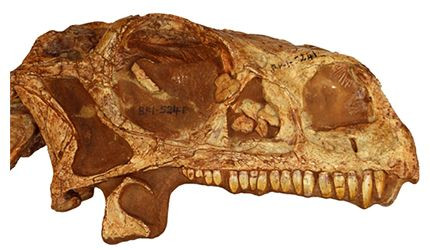3D-Print Your Own Dinosaur Skull From This Fossil Blueprint

A scientist has created the blueprint for a dinosaur skull and released it to the public, so anyone with a 3D printer can make their own authentic replica of the head of an African dino that lived 200 million years ago.
The cranium belongs to a Massospondylus, which is part of a group of herbivores with long necks and tails called sauropodomorphs. A CT scan of the fossil revealed intricate detail on the skull, including “tiny features like nerves exiting the brain and the balance organs of the inner ear,” according to a statement from Wits University.
Massospondylus was discovered in South Africa in the mid-19th century but the comprehensive scan brought to light features that had not before been described.
In addition to the information about the path of nerves in the brain and skull and the interior of the ear, a new study in the journal PeerJ goes into detail about how the extinct creature’s teeth grew during its life, among other points.

“It just goes to show that researchers still have a lot to learn about South Africa’s dinosaurs,” researcher Kimi Chapelle said in the university statement. “By comparing the inner ear to that of other dinosaurs, we can try and interpret things like how they held their heads and how they moved. … Also, the fact that the bones of the braincase aren't fully fused means that this particular fossil is that of an individual that is not fully grown yet. This allows us to understand how Massospondylus grew, how fast it grew and how big it could grow.”
The sauropodomorph family that Massospondylus belonged to also included the titanosaurs, some of the biggest dinosaurs to ever walk the Earth. The biggest titanosaur, the recently discovered and named Patagotitan mayorum, was about 122 feet long, weighed close to 70 tons and came around about 100 million years after the Massospondylus.
CT scans are a 3D form of X-ray imaging and, among their other applications, have been used in recent years to uncover new information about old fossils. A scan of a megalosaurus fossil dug up about 200 years ago, for example, revealed hidden teeth in the jaw while a scan of a 385-million-year-old shark showed new details that helped scientists pinpoint when the evolutionary lines of sharks and humans split off from one another.
© Copyright IBTimes 2025. All rights reserved.




















